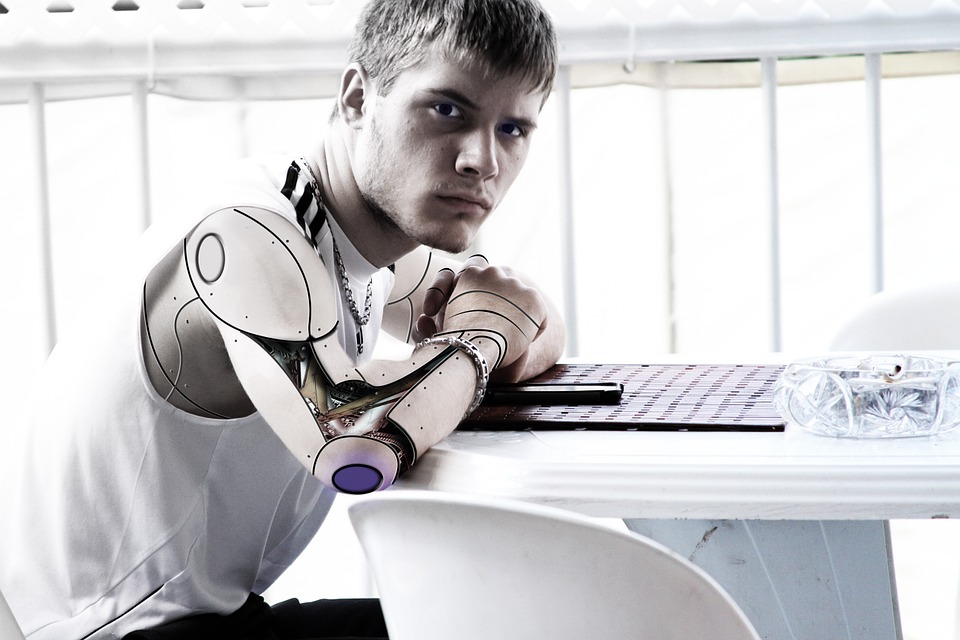While tech giants like Elon Musk are warning the world against a potential AI apocalypse once machines become more intelligent, some are more concerned about giving robots more tools to become stronger. One group of scientists from the Columbia University School of Engineering and Applied Science has just created a new type of synthetic muscle that can be easily manufactured and is able to lift objects 1,000 times heavier than it is.
Impressive as its strength might be, the main reason for creating robots with these synthetic muscles actually lies in the more delicate aspects of its functionality. As Futurism notes, machines still have a hard time performing tasks such as picking up soft objects without the huge risk of causing damage. With synthetic muscles, however, this could be less of an issue.
What the Columbia University researchers were able to create is a 3D-printable material that requires neither external compressors nor pressure regulation equipment, which simply add to the robot’s size. By removing them from the equation, the resulting construct could be smaller but more gentle.
The muscle itself is made out of a matrix of silicone rubber, with ethanol microbubbles added in the structure. Using a thin line of resistive wire, the muscle is actuated using electricity, much like how the neural sparks in the brain control the contraction of organic muscles. In a press release, the leader of the research group Hod Lipson explains what this discovery is about and why it is pertinent.
“We’ve been making great strides toward making robots minds, but robot bodies are still primitive,” Lipson explained. “This is a big piece of the puzzle and, like biology, the new actuator can be shaped and reshaped a thousand ways. We’ve overcome one of the final barriers to making lifelike robots.”
As to what potential uses this muscle could see in the future; since it has to do with handling soft objects, it might lead to workable robot nannies. If so, it could reshape the caregiving service industry. It could also pave the way to even better robotic prosthetics.



 Intel’s Testing of China-Linked Chipmaking Tools Raises U.S. National Security Concerns
Intel’s Testing of China-Linked Chipmaking Tools Raises U.S. National Security Concerns  Nvidia Weighs Expanding H200 AI Chip Production as China Demand Surges
Nvidia Weighs Expanding H200 AI Chip Production as China Demand Surges  SpaceX Insider Share Sale Values Company Near $800 Billion Amid IPO Speculation
SpaceX Insider Share Sale Values Company Near $800 Billion Amid IPO Speculation  Evercore Reaffirms Alphabet’s Search Dominance as AI Competition Intensifies
Evercore Reaffirms Alphabet’s Search Dominance as AI Competition Intensifies  China Adds Domestic AI Chips to Government Procurement List as U.S. Considers Easing Nvidia Export Curbs
China Adds Domestic AI Chips to Government Procurement List as U.S. Considers Easing Nvidia Export Curbs  Biren Technology Targets Hong Kong IPO to Raise $300 Million Amid China’s AI Chip Push
Biren Technology Targets Hong Kong IPO to Raise $300 Million Amid China’s AI Chip Push  Trump Signs Executive Order to Establish National AI Regulation Standard
Trump Signs Executive Order to Establish National AI Regulation Standard  Apple Explores India for iPhone Chip Assembly as Manufacturing Push Accelerates
Apple Explores India for iPhone Chip Assembly as Manufacturing Push Accelerates  SpaceX Edges Toward Landmark IPO as Elon Musk Confirms Plans
SpaceX Edges Toward Landmark IPO as Elon Musk Confirms Plans  Trump’s Approval of AI Chip Sales to China Triggers Bipartisan National Security Concerns
Trump’s Approval of AI Chip Sales to China Triggers Bipartisan National Security Concerns  SUPERFORTUNE Launches AI-Powered Mobile App, Expanding Beyond Web3 Into $392 Billion Metaphysics Market
SUPERFORTUNE Launches AI-Powered Mobile App, Expanding Beyond Web3 Into $392 Billion Metaphysics Market  SK Hynix Labeled “Investment Warning Stock” After Extraordinary 200% Share Surge
SK Hynix Labeled “Investment Warning Stock” After Extraordinary 200% Share Surge  Adobe Strengthens AI Strategy Ahead of Q4 Earnings, Says Stifel
Adobe Strengthens AI Strategy Ahead of Q4 Earnings, Says Stifel  Microsoft Unveils Massive Global AI Investments, Prioritizing India’s Rapidly Growing Digital Market
Microsoft Unveils Massive Global AI Investments, Prioritizing India’s Rapidly Growing Digital Market 


























